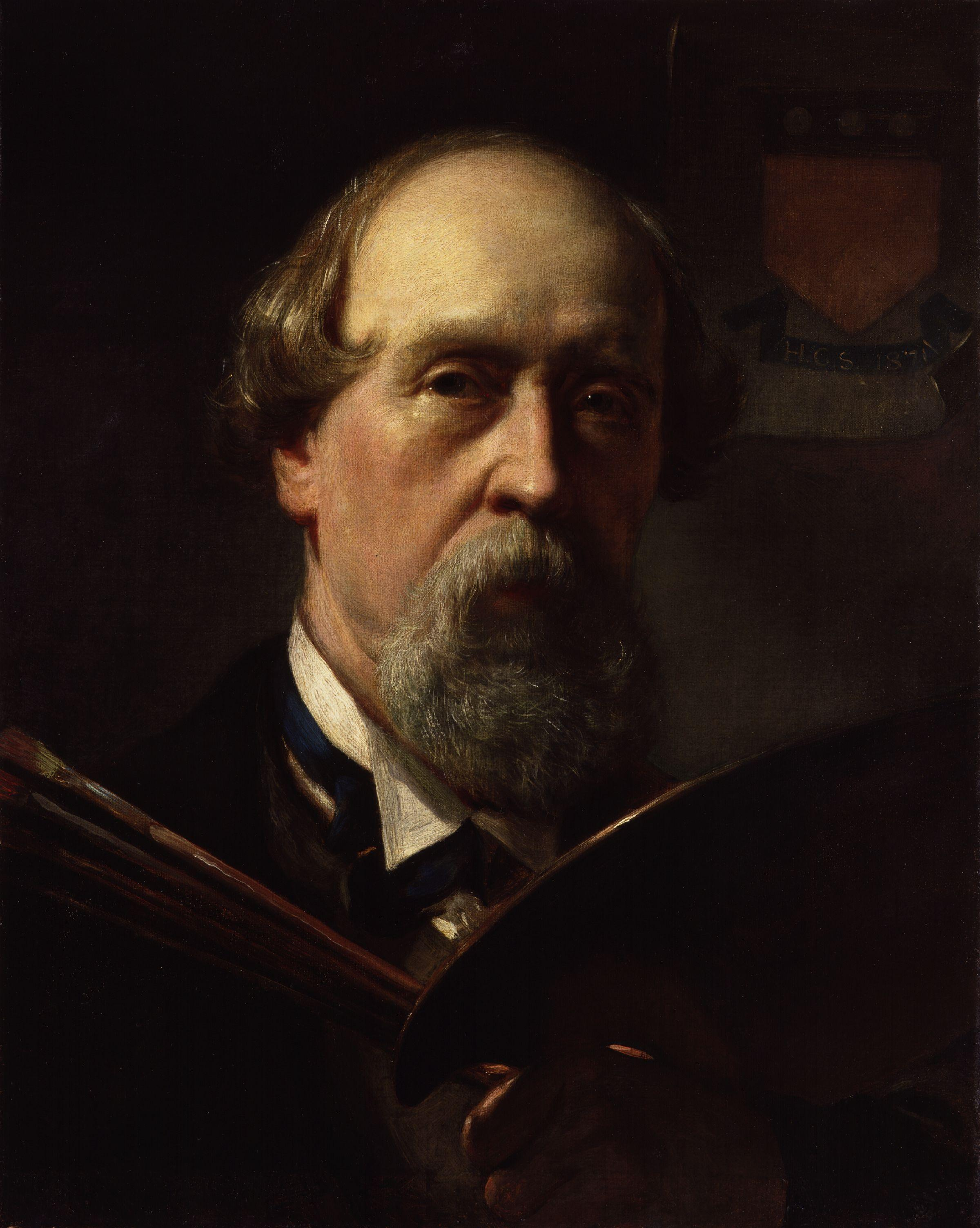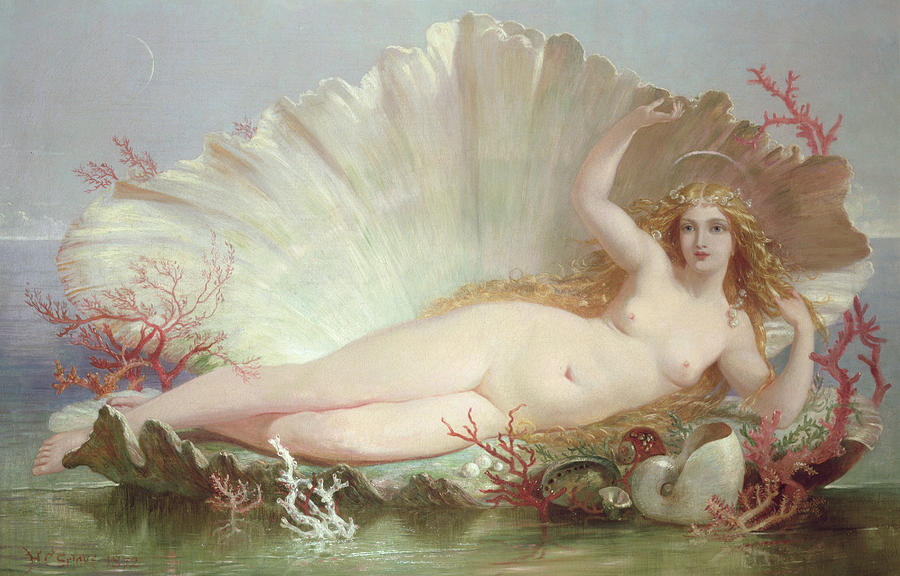H. C. Selous on:
[Wikipedia]
[Google]
[Amazon]
 Henry Courtney Selous (b. Panton Street,
Henry Courtney Selous (b. Panton Street,
 He was the son of Gideon "George" Slous (1777–1839), a
He was the son of Gideon "George" Slous (1777–1839), a

 In 1818 Selous entered the
In 1818 Selous entered the
Portrait
at the
 Henry Courtney Selous (b. Panton Street,
Henry Courtney Selous (b. Panton Street, Haymarket, London
Haymarket is a street in the St James's area of the City of Westminster, London. It runs from Piccadilly Circus in the north to Pall Mall at the southern end. Located on the street are the Theatre Royal, His Majesty's Theatre, New Zealand H ...
1803; d. Beaworthy
Beaworthy is a village and civil parish in the West Devon district of Devon, England. According to the 2001 census it had a population of 236.
Notable residents
* Henry Courtney Selous (b. Haymarket, London
Haymarket is a street in the S ...
, Devon, 24 September 1890) was an English painter, illustrator
An illustrator is an artist who specializes in enhancing writing or elucidating concepts by providing a visual representation that corresponds to the content of the associated text or idea. The illustration may be intended to clarify complicate ...
and lithographer
Lithography () is a planographic method of printing originally based on the immiscibility of oil and water. The printing is from a stone (lithographic limestone) or a metal plate with a smooth surface. It was invented in 1796 by the German ...
.
Life
 He was the son of Gideon "George" Slous (1777–1839), a
He was the son of Gideon "George" Slous (1777–1839), a Flemish
Flemish may refer to:
* Flemish, adjective for Flanders, Belgium
* Flemish region, one of the three regions of Belgium
*Flemish Community, one of the three constitutionally defined language communities of Belgium
* Flemish dialects, a Dutch dialec ...
portrait and miniature painter, and a pupil of John Martin who was an important and influential English painter of the 19th century. He was an occupant of Keats House
Keats House is a writer's house museum in what was once the home of the Romantic poet John Keats. It is in Keats Grove, Hampstead, in inner north London. Maps before about 1915
show the road with one of its earlier names, John Street; the ...
in Hampstead
Hampstead () is an area in London, England, which lies northwest of Charing Cross, located mainly in the London Borough of Camden, with a small part in the London Borough of Barnet. It borders Highgate and Golders Green to the north, Belsiz ...
, from 1835 to 1838. Selous had two brothers, Frederick Lokes Slous (the father of Frederick Courteney Selous
Frederick Courteney Selous, Distinguished Service Order, DSO (; 31 December 1851 – 4 January 1917) was a British people, British explorer, army British Army, officer, professional hunter, and conservation movement, conservationist, famous for ...
) and Angiolo Robson Slous, a playwright who wrote ''True to the Core: A Story of the Armada'' and whose daughter Alice married the novelist Morley Roberts
Morley Charles Roberts (29 December 1857 – 8 June 1942) was an English novelist and short story writer, best known for ''The Private Life of Henry Maitland''.
Life and work
Roberts was born in London, the son of William Henry Roberts (1831� ...
.
He married on 4 March 1837 Emily Elizabeth (d. 1879), daughter of the successful miniature painter Henry Pierce Boneat at St Pancras Parish Church and they had four daughters.
He died on 24 September 1890 and was buried on the eastern side of Highgate Cemetery
Highgate Cemetery is a place of burial in North London, England, designed by architect Stephen Geary. There are approximately 170,000 people buried in around 53,000 graves across the West and East sides. Highgate Cemetery is notable both for so ...
.
Career

 In 1818 Selous entered the
In 1818 Selous entered the Royal Academy
The Royal Academy of Arts (RA) is an art institution based in Burlington House in Piccadilly London, England. Founded in 1768, it has a unique position as an independent, privately funded institution led by eminent artists and architects. Its ...
Schools and also exhibited his first work, a ''Portrait of a Favourite Cat'' (location untraced), at the Academy. He submitted animal portraits for the next three years before embarking on human portraiture. His early works were exhibited under the name Slous, but at some time between 1831 and 1838 he adopted the name Selous.
In the 1840s he began to paint historical subjects, initially inspired by the renewed interest in history painting prompted by the New Palace of Westminster
The Palace of Westminster is the meeting place of the Parliament of the United Kingdom and is located in London, England. It is commonly called the Houses of Parliament after the House of Commons and the House of Lords, the two legislative ch ...
cartoon
A cartoon is a type of visual art that is typically drawn, frequently Animation, animated, in an realism (arts), unrealistic or semi-realistic style. The specific meaning has evolved, but the modern usage usually refers to either: an image or s ...
competition for the designs of frescoes
Fresco ( or frescoes) is a technique of mural painting executed upon freshly laid ("wet") lime plaster. Water is used as the vehicle for the dry-powder pigment to merge with the plaster, and with the setting of the plaster, the painting become ...
on the new building in 1843. In this he submitted a picture of ''Boadicea Harranguing the Iceni'' which won a premium of £200 in 1843. He was aided by the knowledge of mural
A mural is any piece of Graphic arts, graphic artwork that is painted or applied directly to a wall, ceiling or other permanent substrate. Mural techniques include fresco, mosaic, graffiti and marouflage.
Word mural in art
The word ''mural'' ...
technique he had acquired by working for a panorama painter. Despite the prize, the picture was criticised by one reviewer because the "violence of the action and dashing lights carry us away like the speech of a mob orator."Clarke, Guide to the Westminster Frescoes, 1843 p.19
He painted historical pieces for the rest of his career, for example ''Cassio Wounded'' (1874, location untraced), as well as such works as ''The Opening of The Great Exhibition
The Great Exhibition of the Works of Industry of All Nations, also known as the Great Exhibition or the Crystal Palace Exhibition (in reference to the temporary structure in which it was held), was an international exhibition that took ...
'' (see works, below) recording contemporary events.
Works
* ''The opening of The Great Exhibition, byQueen Victoria
Victoria (Alexandrina Victoria; 24 May 1819 – 22 January 1901) was Queen of the United Kingdom of Great Britain and Ireland from 20 June 1837 until Death and state funeral of Queen Victoria, her death in January 1901. Her reign of 63 year ...
on 1 May 1851'' depicts the Archbishop of Canterbury
The archbishop of Canterbury is the senior bishop and a principal leader of the Church of England, the Primus inter pares, ceremonial head of the worldwide Anglican Communion and the bishop of the diocese of Canterbury. The first archbishop ...
offering the benedictory prayer at the opening ceremony. Sir Henry Cole
Sir Henry Cole FRSA (15 July 1808 – 15 April 1882) was an English civil servant and inventor who facilitated many innovations in commerce, education and the arts in the 19th century in the United Kingdom. Cole is credited with devising the c ...
, the first director of the Victoria & Albert Museum
The Victoria and Albert Museum (abbreviated V&A) in London is the world's largest museum of applied arts, decorative arts and design, housing a permanent collection of over 2.8 million objects. It was founded in 1852 and named after Queen ...
, stands in the group on the right.
* ''Jerusalem in her Grandeur''
* ''The Glorious Charge of the Heavy Brigade
The Battle of Balaclava, fought on 25 October 1854 during the Crimean War, was part of the Siege of Sevastopol (1854–55), an Allied attempt to capture the port and fortress of Sevastopol, Russia's principal naval base on the Black Sea. The eng ...
'' depicts the Inniskilling Dragoons
The 6th (Inniskilling) Dragoons was a Cavalry regiments of the British Army, cavalry regiment in the British Army, first raised in 1689 as Sir Albert Cunningham's Regiment of Dragoons. One of the regiment's most notable battles was the Battle ...
and the Scots Greys
The Royal Scots Greys was a cavalry regiment of the Army of Scotland that became a regiment of the British Army in 1707 upon the Union of Scotland and England, continuing until 1971 when they amalgamated with the 3rd Carabiniers (Prince of ...
during the classic cavalry charge at Balaclava, 1855, location untraced.
* 22 original pen-and-ink drawings to John Bunyan
John Bunyan (; 1628 – 31 August 1688) was an English writer and preacher. He is best remembered as the author of the Christian allegory ''The Pilgrim's Progress'', which also became an influential literary model. In addition to ''The Pilgrim' ...
's ''Pilgrim's Progress
''The Pilgrim's Progress from This World, to That Which Is to Come'' is a 1678 Christian allegory written by John Bunyan. It is commonly regarded as one of the most significant works of Protestant devotional literature and of wider early moder ...
'', London, 1844 or earlier, 22 original pen-and-ink drawings on wove paper
References
External links
Portrait
at the
National Portrait Gallery (London)
The National Portrait Gallery (NPG) is an art gallery in London that houses a collection of portraits of historically important and famous British people. When it opened in 1856, it was arguably the first national public gallery in the world th ...
* (under 'Selous, H. C.' as well as 'Henry Courtney')
{{DEFAULTSORT:Selous, Henry Courtney
1803 births
1890 deaths
Burials at Highgate Cemetery
19th-century English painters
English male painters
19th-century English male artists